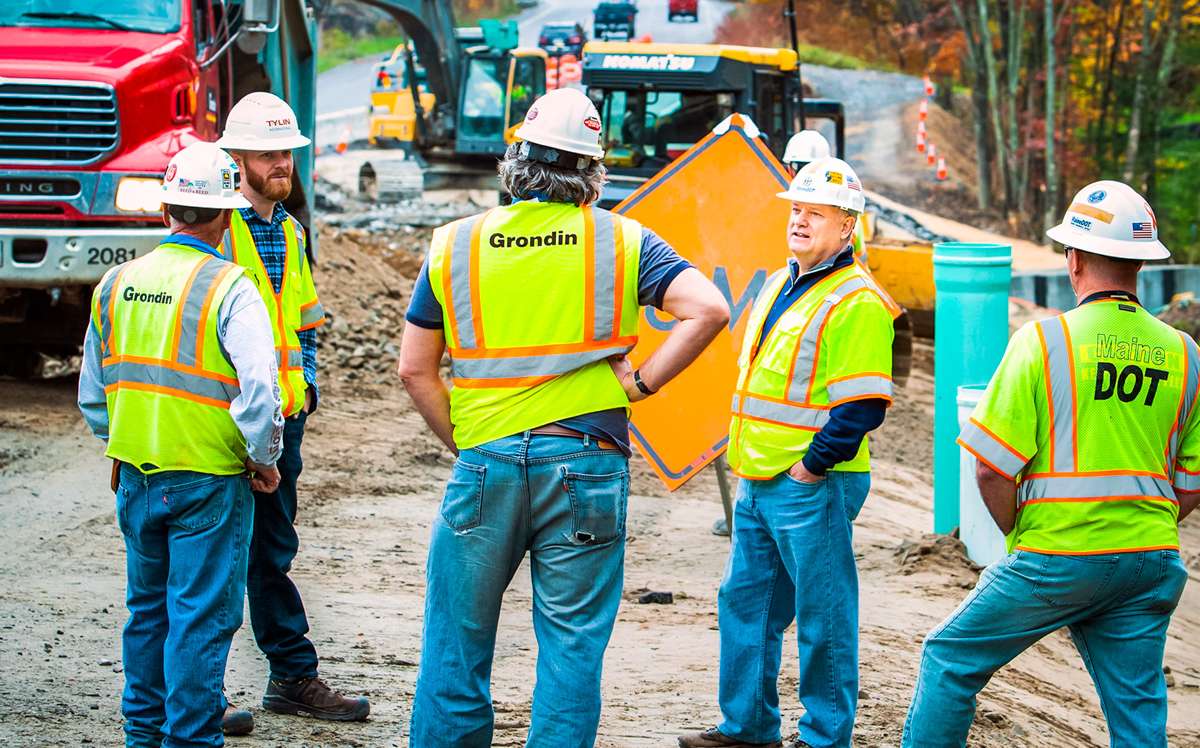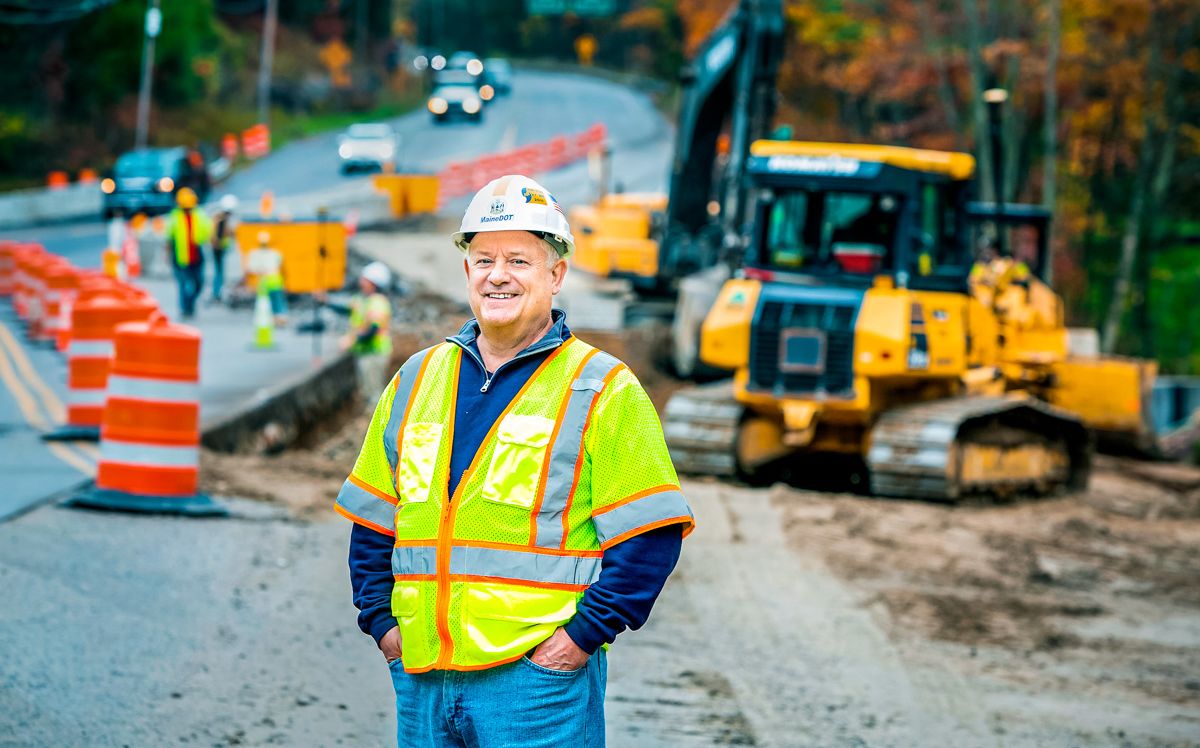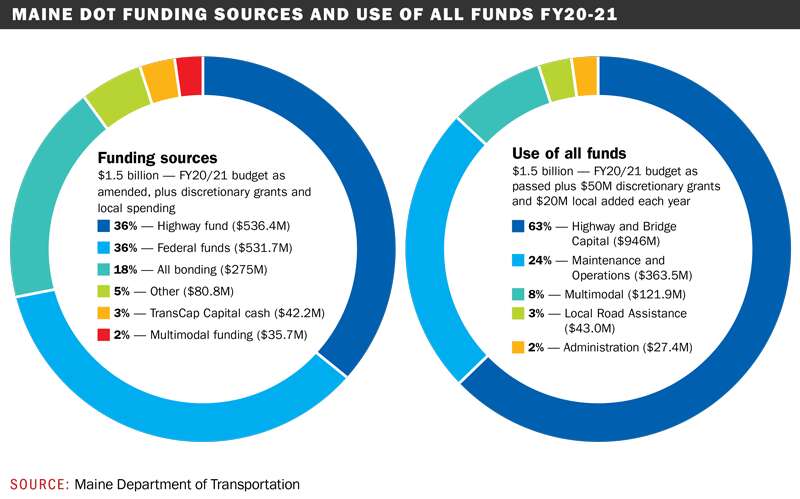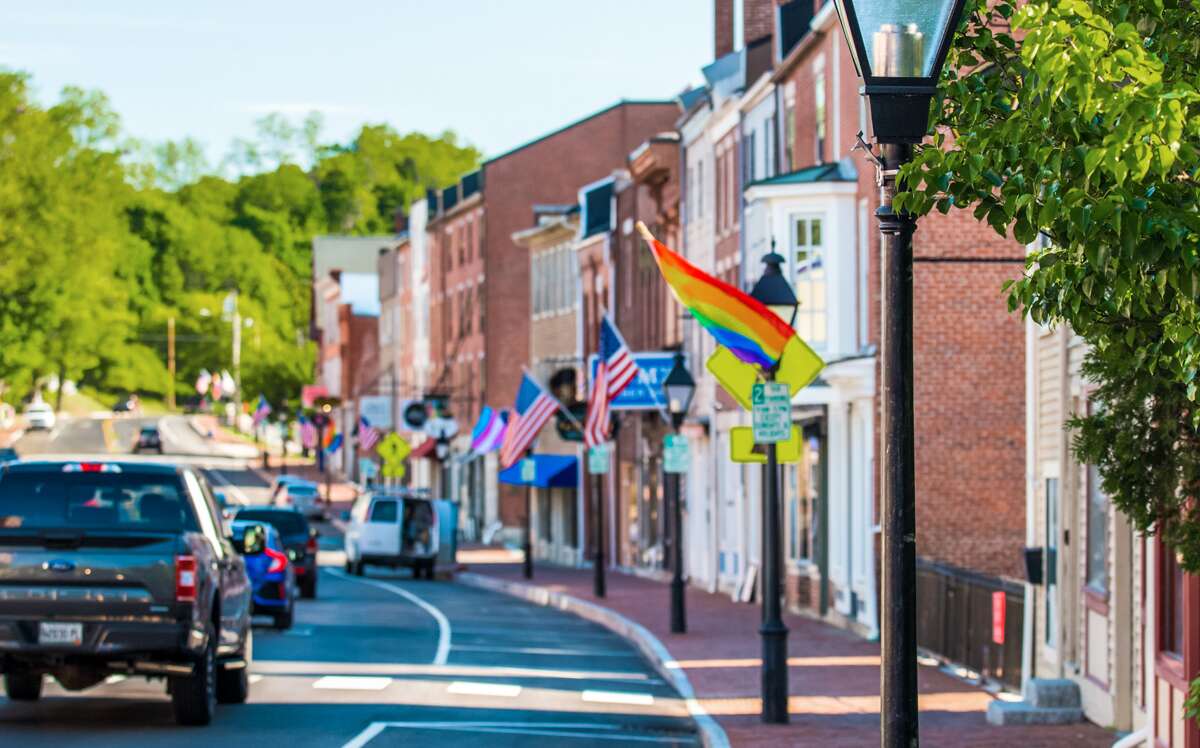
Maine DOT’s ‘MacGyver’ moment: Commissioner Bruce Van Note looks to stretch dollars
 File photo / Tim Greenway
Bruce Van Note, commissioner of the Maine Department of Transportation
File photo / Tim Greenway
Bruce Van Note, commissioner of the Maine Department of Transportation
As Maine Department of Transportation Commissioner Bruce Van Note works on the state’s next three-year rolling plan for January, he spoke with Mainebiz via Zoom about challenges during COVID and what tops his to-do list. The Houlton native and long-time Green Bay Packers fan, who grew up in Bath and has lived in several other localities in the state, says his job is a “blessing” that has allowed him to know almost every corner of Maine.
Mainebiz: What’s been the biggest challenge for the DOT during COVID?
Bruce Van Note: I just think of the loss of revenue. Traffic dropped in March by about 50%, though it has rebounded to be down by only about 10% right now. That translated into a loss of about $40 million for the biennium that we are in [two-year budget period that ends June 30, 2021], and another $30 million for the next biennium. Adjusting to that has been the biggest challenge, but we’ve been able to do it by using bonding and other mechanisms to keep production up.
MB: How will you make up for that shortfall?
BVN: A multitude of things, but the primary thing is that by chance, actually, the legislature decided that our bond issue should be moved up from November, so the vote was in July [in which voters approved $105 million in general obligation bonds for infrastructure projects]. That vote allows us to essentially use some of that bond money for capital projects rather than wait to use it next year. So not only did we produce all the capital work we expected to, we actually added about 10 projects worth $33 million this year, accelerated from next year. COVID is a very big, dark cloud, but one of the few silver linings to lower traffic is that it’s more cost-effective and safe to go out on roads and do projects — and so we did a lot.

MB: Any changes in work practices because of COVID?
BVN: Obviously, the contractors come up with best practices for COVID — when you’re supposed to wear masks and not, and distance and those kinds of things. This office that I sit in generally has a capacity of 500 people, but I’d be surprised if there were more than 50 as I sit here today. One thing about DOT is that we love a good challenge.
MB: So things have gone pretty smoothly?
BVN: Very! Last I looked, we had an all-time capital project delivery rate of 96%, which will be a new high for us. People have stepped up and done what we needed. Long-term, there’s going to have to be some broad bipartisan conversations about how we fund transportation, and we do need more revenue, but now is not the best time for that conversation, Given rock-bottom interest rates, we’re probably going to have to rely on bonding to get us through this pandemic. That would mean probably a bond larger than $100 million next year, and it might need to be in June instead of November to get us through.
MB: What are your hopes for a federal infrastructure bill or stimulus moving ahead?
BVN: I continue to have hope, but hope is not a plan. The good news is that it’s almost universally accepted that transportation infrastructure is smart for the short and long term. Not only does it employ people in the short term for that kind of stimulative effect, but it provides a foundation for long-term economic growth. We are planning on flat federal funding.
MB: Which Maine DOT projects are you most excited about?
BVN: We do have some big projects, like the Piscataqua River Bridge, that has been under construction for some time. When that is done, that should allow some part-time shoulder use to essentially have another lane coming into Maine at peak times. That has the opportunity to make a real difference, and make Maine a more attractive place for tourists. In terms of international trade and the viability of the Twin Rivers mills up in Madawaska, we have a huge, $85 million project coming forward to replace that bridge up there. We’re also doing some work on connections on [U.S. Route] 302, and we’re finally catching up on some work on [U.S. Route] 201 — heavy freight routes that are central to forest projects and other Maine industries. We publish everything in our work plan, so people can see exactly what we’re doing, and I’m always afraid that when I select two or three, that I’m leaving out the other 200 or 300, and I don’t want people to feel left out. You can always go on www.mainedot.gov and look for our work plan.
MB: Any hiring challenges at the Maine DOT lately?
BVN: I’m probably the biggest hiring challenge there is right now, because there’s essentially a freeze that’s administered through my level. The ones you see advertised are generally only related to health and safety, like for transportation workers who operate snow plows.
MB: They are essential workers?
BVN: They certainly are. With every position, to me there has to be a conversation about, “Is it something we could do without for the next year or two?,” because we have to adjust. We have to spend as little as we can, and we will be looking at our mix of projects to find out if there are ways we can stretch the dollar even further, through alternative paving treatments and things like that. The best transportation dollar is one you never spend, so we are honestly in kind of a “MacGyver” mode right now, which I don’t necessarily take as a negative. If you think of that TV series, the person always finds a way to do something even though you don’t have enough stuff to do that, and that’s the mode we’re in. We’re trying to maintain the service with less money, especially in the near term. We have to absorb revenue cuts, and bonding is a part of the solution, but looking for more efficient ways is a part, too.

MB: What’s at the top of your to-do list for the rest of this year?
BVN: This time of year is when we do the work to put out the work plan that you see in January. That’s a lot of work because you have to try to project what your funding is going to be for the next three years, which includes a president to be named later, a new Congress to be named later and a new state Legislature. Then you have to take the projects you already have in the plan, make sure that they’re fully funded, and then you get to add work generally for the third year. That’s what we’re in the midst of right now. Obviously the Interstate is our No. 1 priority, and we make sure that it gets everything that it needs. But get down to a Priority 4 road, and we might just be putting down a thin layer of pavement every seven years. I also think we need to shift our investment focus a little bit to look at Main streets all over Maine. We did a little project in Hallowell that was a game-changer, reconstructing their Main Street and remedying long-standing sidewalk and crosswalks issues. It’s a much more pedestrian-friendly, vibrant place. We’re also reconstructing Main Street in Kingfield.

MB: Do you see doing something like that in other places?
BVN: That’s exactly right — there are places like that all over the state. Historically, we have shied away from those kinds of projects simply because they’re expensive. But given the current trend we’re seeing right now of people thinking about coming to Maine and teleworking, you need quality places. And making sure that the road is safe and smooth in rural areas, that’s part of quality. If we could do one or two of those a year, that would be making Maine a better place to live, work and play.
MB: Would you enlist developers to help in this undertaking?
BVN: We always consult with commercial developers, so if a private developer in an area is not interested, then you’re not going to do it. We already have a small program where private businesses, the town and DOT can partner on projects, but that’s focused on an individual business. I’m talking about trying to take the gem of what Maine is (“You can get there from here”), make sure that stays, and that where you’re getting is someplace you want to go.










0 Comments